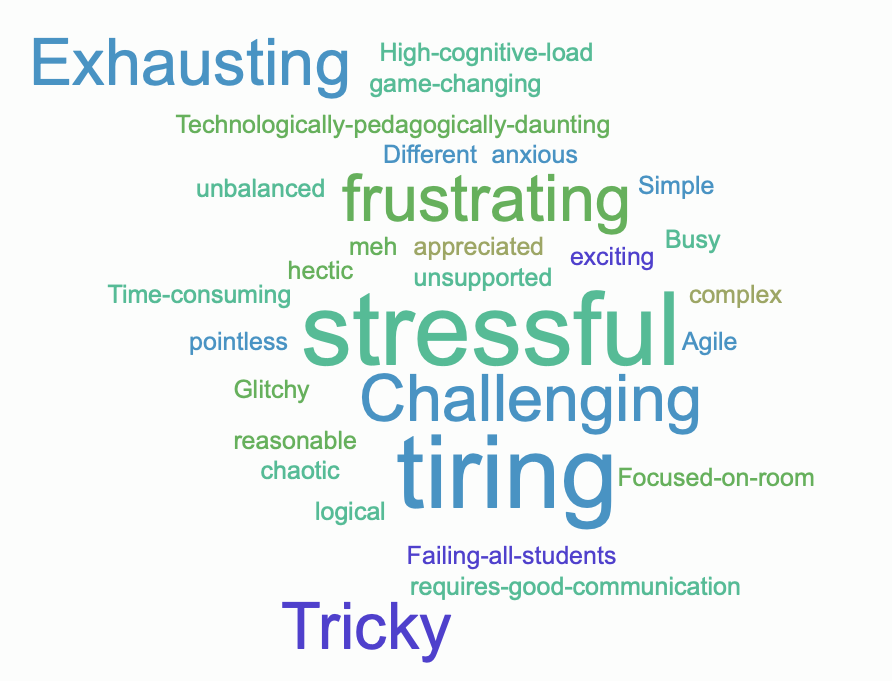To avoid confusion I’ll start by setting out the definition of ‘hyflex’ in the context of this post. For this I will draw upon Sue Beckingham’s really useful ‘Modes of Learning’ diagram. This seems to be what many people agree are the recognised (UK) definitions.
This mode defines ‘hyflex’ as “students have the flexibility to choose to attend in person or join online” and from my own perspective is where simultaneous in-person and remote students join a session together.
So, I was particularly interested in exploring staff experiences in relation to hyflex, and the extent to which they were provided with additional resources or support. I created a short survey which I shared on twitter and collected results over a few days. This resulted in 41 respondents, the results of which are presented below.
In most cases (74%) those teaching in a hyflex mode were doing so with some additional software or hardware and 47% had both. This suggests that most institutions recognised the fact that extra software or hardware was needed to support the hyflex model.
Interestingly, whether additional software or hardware was provided or not didn’t seem to impact on the overall experience. Those with no additional hardware or software on average scored their experience as 5.4/8 (1 = poor & 8 = excellent) and those with additional hardware or software scored their experience 5.36/8 so hardly any variance at all.

When asked if they received any additional in-person support the majority (80%) of respondents indicated that they did not and only two respondents stated that they had received any support from colleagues in professional service areas. Where support was provided this seems to have come mostly from other academic colleagues.

It may well be that staff were happy and confident enough to manage this activity without additional support (especially if they had familiarised themselves with the technology throughout lockdown). Alternatively it may be that there just wasn’t other colleagues around on campus to provide such support.
In terms of overall experience there was a slight improvement in scores for those who had received some additional in person support.

However, even though the overall experience score from all respondents was generally more positive than negative (5.4 / 8) the word cloud below clearly suggests a more negative overall experience when the respondents were asked to identify up to three words to describe their experience.
I suspect that the word cloud highlights the significant effort being put into running hyflex sessions by staff, and whilst on average their overall experience scores may not have been that poor it is clear that this effort has been quite impactful on individuals.

I was also interested in staff perceptions of the student experience of hybrid, from the point of view of both types of attendees (in-person/remote).

There was a general consensus by staff that the students who attended remotely had a statistically significant (25%) poorer experience than those who were in-person for the session. It would be particularly interesting to get a student perspective on this.
So in summary, it would seem that most respondents felt as if they have managed well in providing a hyflex experience (under some difficult circumstances), even where they didn’t have additional in-session support. However, it has not been without it’s downsides, as articulated through the open text and particularly worrying that this process largely appears to be a ‘stressful’ and ‘frustrating’ experience.
To finish this post I will leave you with some of the ‘tips’ that were left to help others who may also be considering this mixed mode of teaching. The main message that seems to come across from these is that if you don’t have to run hyflex sessions then don’t. If you do them make sure you plan and consciously focus attention on the remote students.
Thank you to all of you who contributed.
It’s just a difficult thing to do, trying to balance paying attention to both groups of students at the same time.
Overall Experience score 4/8
Don’t just try to teach the things you used to teach in-person only, in exactly the same way. Everything needs adjusting to a combined audience. Plus, try and include online students in the same way as in person: ask questions, encourage input and so on.
Overall Experience score 5/8
You are trying to provide an option for students who can’t attend in person. Something is better than nothing.
Overall Experience score 8/8
If you have the luxury of not having it mandated as a mode of delivery, don’t do it.
Overall Experience score 6/8
Try not to do it 🤪 but, If u have to, know the tech backwards and forwards and try n break it in advance. Practice and no fear is the key.
Overall Experience score8/8
HyFlex Lectures are fine. Seminars are not.
Overall Experience score 3/8




16 Responses
Thanks for sharing this, Simon, interesting findings. I guess the experience is really dependent on the context, level of support & even general understanding of what hyflex means. But indeed, a student perspective can be very useful, ideally both an in-class & an online student.